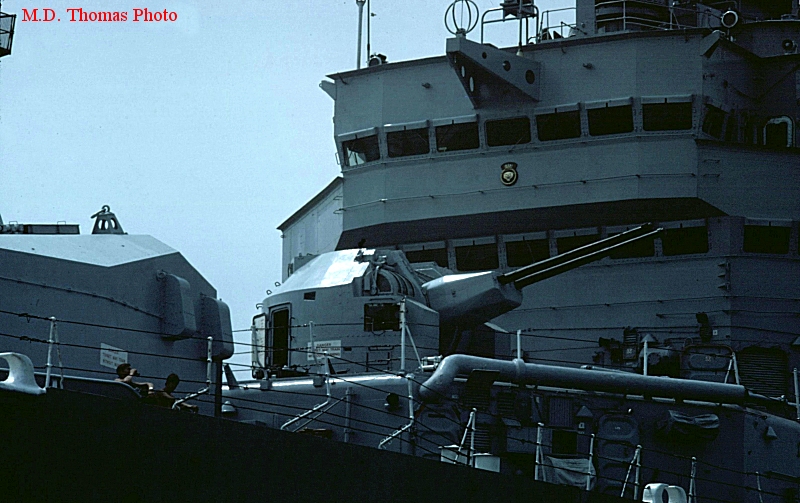Earlier today I saw a discussion around the guns used on the ST. LAURENT, RESTIGOUCHE, MACKENZIE, and ANNAPOLIS classes of destroyer escorts that served in the RCN starting in the 1950s, in particular the Vickers 3"/70 and the FMC 3"/50.
The latter was used on all four classes (originally both fore and aft on the ST. LAURENT class, forward on the ANNAPOLIS class, and aft on the RESTIGOUCHE and MACKENZIE classes), while the former was used only as the forward mounting on the RESTIGOUCHE and MACKENZIE classes.
I have previously written a bit about both mountings on the
Hazegray and Underway website, where I variously wrote:
About the 3"/50:
"Mountings started out open to the weather, and fibreglass and aluminum gun shields were added later. The shields were relatively fragile, and photos often show the forward mounting facing aft to protect it from storm damage.
Mounted on the foc'st'le and quarterdeck of ST. LAURENT derived destroyer escorts, forward of the bridge. Also mounted in X position on Tribal class DDEs, and A position on ALGONQUIN and aft on CRESCENT after the latter two's ASW conversions. BONAVENTURE carried four of these mountings when originally commissioned, but had the two forward mountings removed during her 1967 refit. Of the MACKENZIE class ships, QU'APPELLE carried a second of these mountings forward in place of the 3"/70 Mk.6 found on the rest of the class members.
The two PROTECTEUR class AOR's were originally fitted with this mounting on the foc'st'le, but its location exposed it to damage from heavy seas, and it was removed in 1984. The mountings were preserved ashore, and one was re-installed on PROTECTEUR for her deployment to the Persian Gulf in 1990-91.
The mounting was originally fitted with an SPG 34 tracking radar right on the mounting, which was later replaced with an SPG 48 tracker between the barrels (see photo 6). On NIPIGON and ANNAPOLIS, the SPG 48 and GUNAR fire control system was replaced with the Mk.69 GFCS and integral SPG 515 tracker during their DELEX refits."
and about the 3"/70:
"Mounted on the foc'st'le of destroyer escorts, forward of the bridge. This mount was originally developed for the RN for use in aircraft carriers, but was eventually installed in RN service only in the TIGER class cruisers, which mounted three mountings each (one forward, two amidships). This mounting experienced teething problems when entering service in RCN destroyer escorts, but these were eventually resolved. The ammunition handling system was apparently referred to as "the bottling plant" due to the high rate of fire achieved when working properly."
I came across some other information in my files on the 3"/70 that I thought I would post here. While originally marked CONFIDENTIAL and/or RESTRICTED, these documents were long ago declassified. I don't believe I have the entire document, but here is what I do have (hopefully they are legible) from either BRCN 1740 or CBCN 5902:
 |
| Page 1 |
 |
| Page 2 |
 |
| Page 3 |
 |
| A different cut-away view from a different document. |
 |
| Page 4 |
 |
| Page 5 |
The only other Navy to use this gun was the Royal Navy on their
TIGER class cruisers, TIGER, LION and BLAKE.
 |
| The forward 3"/70 on TIGER. M.D. Thomas photo. |
Two more of these mountings (for a total of 3 per ship) were mounted port and starboard farther aft, though these mountings were eventually removed in favour of a new helicopter hangar.
A note about copyright: The pages of the document on the Vickers gun is hosted on my Smugmug website, and therefore displays my copyright watermark, but this document would originally have been copyright of the Crown.





















































